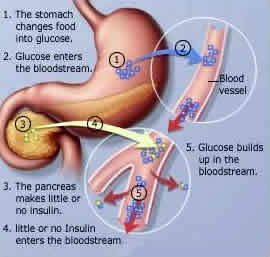diabetes
diabetes articles:

What is Diabetes disorder in which blood sugar (glucose) levels are abnormally high because the body does not produce enough insulin...
Types of Diabetes There are two types of diabetes the type 1 and type 2 diabetes...
Signs and Symptoms of Diabetes Symptoms of diabetes appear as flu-like illness and gradually intensify over the course of a few weeks...
Treatment and Diabetes Management To control and manage type 1 diabetes, you need to inject insulin regularly – up to eight times per day. You must also test your blood sugar frequently...

